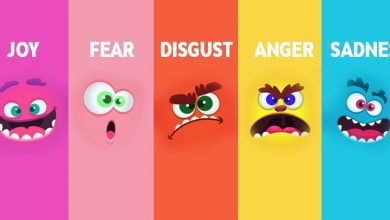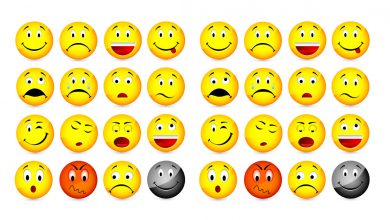Emotional Micro-Journaling
A simple journaling format to help us practice expressing emotions and to start to see the patterns of our lives.

Why did I choose this tool?
I built an app called iFeelio, based on this emotional micro-journaling format, to help me get better at expressing emotions and it has helped me tremendously in my life. Over a period of four years, I entered over 4,000 entries, which is an average of almost three per day. I have seen how it has helped me feel confident in expressing the emotion even when I don’t have certainty about it. It has helped me see that I can feel multiple emotions at the same time. It has helped give me the language to have some of the most difficult conversations at work and at home.
How does this apply to being a trainer?
As a trainer, we are engaged in many highly emotional conversations but often don’t have the words for the emotions. We know what the words are, as we can read and hear them, but we don’t often use those words when we speak to describe our own emotions and those of others. This format helps us practice writing the words so that we associate contexts with the emotions that we feel and can articulate those to others.
Also, when working on a team of trainers, we all have different things that make us feel different things and journaling about emotions can help us recognize and communicate what things make us feel angry, sad, confused, etc., and realize that others may have different things that cause them to feel those same emotions, thus opening a more productive and tolerant conversation.
Lastly, the more we explore our own internal worlds, we may see that certain things that make us angry in the morning can contribute to our anger later in the evening. As a trainer, this will help us see that when people are not happy with our sessions, it is probably from a combination of events in their life, not just our sessions.
Content
Structure
In this format, we answer two questions:
- “How do I feel?”: where we answer using comma-separated words/phrases to describe our emotions.
- “What is happening?”: where we answer with about 1-2 short sentences to describe the current event.
How to answer, “How do I feel?”
While a simple question, I believe it is one of the most difficult questions for us to answer and also one of the most important. In most languages that I’ve studied, one of the first questions we ask someone is a variation of “How are you?” It is a question that we ask other people all the time and perhaps a question we rarely ask ourselves.
When I attempt to answer this question, I look for clues in a variety of places, for example:
- my body sensations (e.g., heartbeat, stomach gurgling, itchiness, breathing rate/ease, etc.)
- my movements (e.g., tapping my feet, biting my nails, clenching my fists, licking my lips, stroking my beard, etc.)
- my posture (e.g., slouched/straight, leaning forward/back, squared/bladed, etc.)
- my words (e.g., use of expletives, pronouns, length of sentence, verb tense, etc.)
- my noises (e.g., sighs, coughs, grunts, yawns, etc.)
- my eyes (e.g., furrowed brow, looking sideways/upward/downward/around, rolling my eyes, squinting, heaviness, etc.)
- my attention (e.g., focused/spaced out, from one thing to another, present/distant, etc.)
- my tempo (e.g., how fast I’m talking/walking/eating, etc.)
- my environment (e.g., level of organization, temperature, noises, etc.)
- my appearance (e.g., length of beard/hair, clothes, etc.)
- my smells (e.g., body odors, sensitivity to smell, etc.)
After paying attention to those things, I try to summarize the feeling in a word or short phrase.
What if I don’t know any words for feelings?
I believe you do—you just may not feel comfortable using those words. If I write the words angry, confused, lost, ambivalent, hopeful, exhausted, joyful, blissful, etc., you probably know what they mean, you just may not use those words to describe your own situations. With this format, you can practice using many of the words you know, by yourself, so you can gain more confidence in applying those words and phrases to your own experiences of emotion. Also, if you know other languages, you can practice in those languages as well.
How to answer, “What is happening?”
I believe that there is not just one thing that causes something to happen—that everything is the result of multiple things interacting with each other. That being said, I think this question is also very simple yet difficult to answer.
When trying to identify what sparks these different emotions, I try to focus on three things 1) saying the first thing that comes to mind, 2) keeping it short and 3) moving again to “how do I feel,” so I don’t focus on perfecting this answer.
When I attempt to answer this question, some categories of things that I write:
- Any of the above things (e.g., “I keep biting my nails.”)
- Things that I/others have/have not done (e.g., “She didn’t answer my phone call.”)
- Things that I/others have/have not said (e.g., “I didn’t tell him what I was really feeling.”)
- Things that I/others have/do not have (e.g., “That guy has so much money.”)
- Things that I/others want/do not want (e.g., “I really want to go to sleep.”)
- Things that I/others believe/do not believe (e.g., “She doesn’t believe in herself.”)
Sometimes I identify what I think is causing the emotions in one entry, and often it takes a series of entries so that I dig deeper into the emotions and find causes that were more buried or outside of my awareness.
How does this format of emotional micro-journaling compare to other journaling formats?
In reviewing why we might keep a journal, I divided the reasons into three time aspects: past, present, and future.
Past
We might keep a journal to focus on the past. We write things down because we want to look back at our memories, see how much we have changed, and reminisce on what happened before. Many journaling formats are great for this, and maybe even better than this format, because they allow us to capture more information, like photos, audio, video, and longer text.
Present
We might keep a journal to focus on the present. We write things down because we want to vent—we want to get the emotions out of our system and move on to the next thing. In this way, I think this format is better than most journals. Most of us do not carry big journals with us and if we do, we normally write in them at the end of the day; by that time, the emotions have probably already passed. Other journaling formats are long-form, making it hard to type quickly on the phone; have a wide variety of prompts, making it hard to get into a rhythm; or have us describe emotions with just an emoji or number, making it hard to fully capture the emotion. This format, in modeling itself after Twitter, uses a very short and structured prompt that forces the interaction to be short so that the emotion can get out and get out quickly. Also, by forcing the short format, and thus forcing us to a new prompt, it helps us move from one emotion to the next.
Future
We might keep a journal to focus on the future. We write things down because we want to understand our patterns in order to influence our future behavior. I think this is where this format shines compared to other journaling formats. Many of the other journaling formats either make it hard to compare one entry to another (as in the long-form, open style) or make the comparisons on a numerical level (i.e., felt an average of 7 last week and an average of 5.6 this week). This format makes it very easy to read through entries and compare them qualitatively to each other—each entry is basically 1-2 sentences of the same format. When done within an app, like iFeelio, the entries can be sorted, filtered, and other analyzed using different views.
Where can I practice this format?
You could practice it in a variety of places, depending on your desire.
If you’re a person who likes to use their phone, you can use the notes app of your phone, as I first did. What I would do is answer the two questions—“How do I feel?” and “What is happening?”—with a short timestamp before it. For example, I would enter:
- 2019-03-15…21:24…sore, confused…my shoulder still hurts and I don’t know why.
- 2019-03-15…21:25…proud…I’m reflecting on iFeelio and I believe I did a really good job building it.
(by the way, those were two entries that I just wrote right now and they were true :-))
You could also use iFeelio (if the app currently works on your phone). The app has a lot of features to help you find patterns and automate certain functions, like timestamping, password protection, and autocomplete. If it doesn’t work, or it doesn’t have a feature you want, you could even create your own app.
You could also write in a small notepad using the format above, in a leather-bound journal, or on a normal piece of paper.
You could also do this activity out loud, by yourself or with a friend.
Whether you write it on paper, the phone, or an app, or do it out loud, it’s less about the medium and more about the format of focusing on the emotion that you’re feeling and the event that is happening.
I highly recommend that you try this. In doing this, you can start to connect the events with the emotions and realize just how many different events can be connected to one emotional state and how many emotional states can be connected with one event.
How would this help me connect with the learner’s emotions?
I believe it was the Dalai Lama who said that there is no compassion without self-compassion, and by extension, no empathy without self-empathy. The more that we let ourselves feel our own emotions, the more we are able to feel someone else’s emotions. Actually, we do not own emotions. Emotions happen and are shared back and forth, passing through us to go to other people. If we let ourselves feel the emotions, we will be more likely to feel the emotions that other people are feeling. If we learn how to communicate the emotions, then others may be more likely to communicate the emotions as well.
Reflection Questions:
- What is one thing that you have learned using this format?
- What is one emotion that you frequently write?
- What is one emotion that you rarely write?
- What is one emotion that you’re afraid to write?
- What is one pattern that you’re starting to see?
- What is one pattern that you’re seeing but wish you weren’t seeing?
- What is one thing that frequently sparks anger in you?
- What is one thing that frequently sparks joy in you?
- What is one thing that frequently sparks confusion in you?
Exercises:
How to apply it in everyday life
- You can use the same two prompts verbally, where you ask yourself or someone asks you, “How do you feel right now? And what is happening?”
- Try to use this format for three weeks and then reflect on what you learned as a result.
- Try using this format across a variety of media—e.g., a notes app on your phone, a piece of paper in your pocket, a paper journal you carry with you—to see how it varies across the media.
- Try using this format at different times of the day—e.g., right after you wake up, while you’re at work or school, before you go to bed—to see how it varies.





